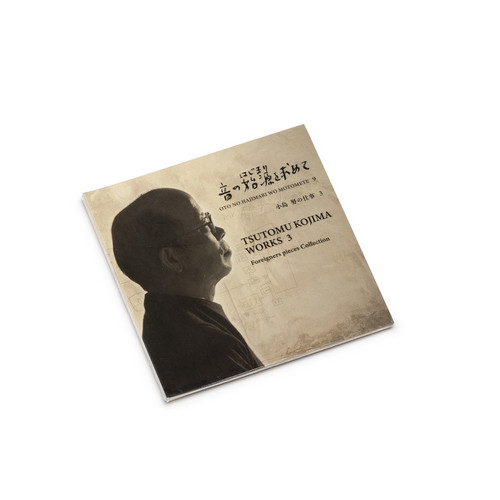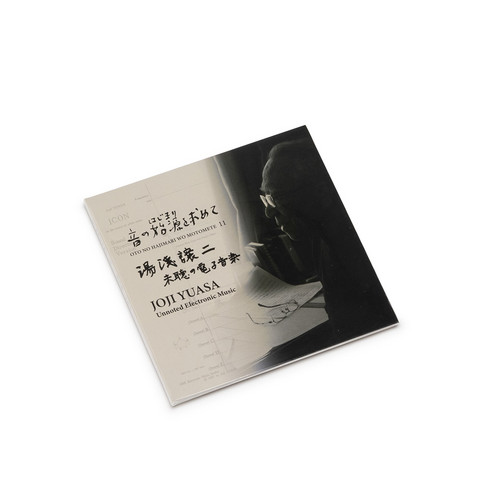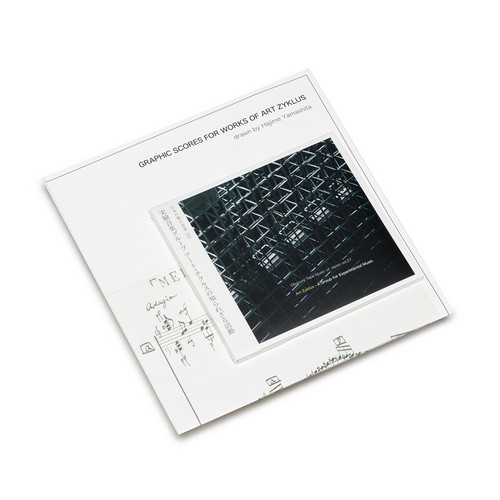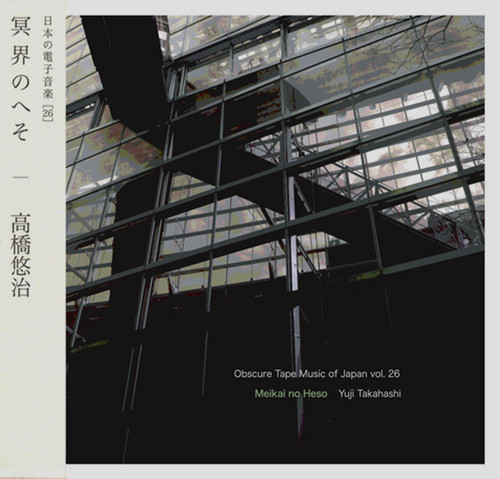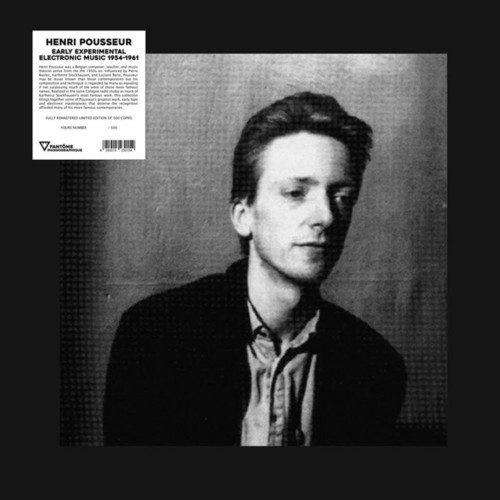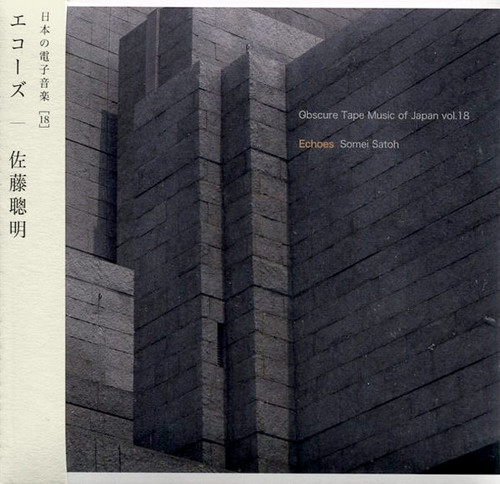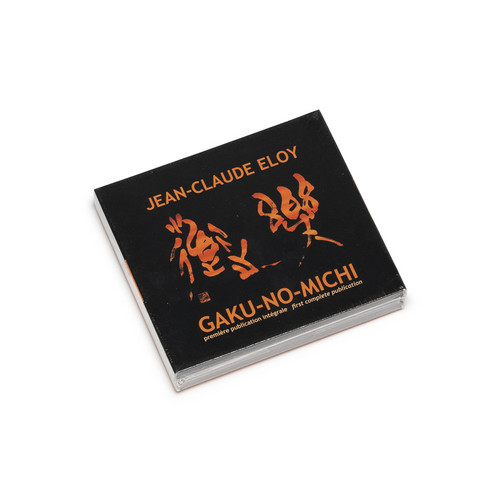Oto no Hajimari wo Motomete vol.9 - Tsutomu Kojima's works
Recent issue of archve series of NHK electronic music studio. Some foreign composers visited and worked at NHK electronic music studio. The frst apperance was Karlheinz Stockhausen's “Telemusik” ('66) assisted by Hiroshi Shiotani, it's included in vol.1 of this CD series. In this new release, three works composed in 70s assisted by Tsutomu Kojima.
1. Jean Claude Eloy “Gaku-No Michi” (1978)French composer Jean Claude Eloy visited Japan three times between 1977 and 1978 and spent a total of nearly…
Oto no Hajimari wo Motomete vol.11
Recent issue of archive series of NHK electronic music studio. This issue is a collection of Joji Yuasa includes works on past issue of this series. “My Blue Sky (No.1)” and “Music for the Main Pavillion of the Okinawa Oceanic Expo” has released on CD by Omega Point.
1. ”Projection Esemplastic” (1964) – sound fileWhen I was asked to create electronic music for NHK, I decided to use only white noise, which originally contained all frequencies, and cut out various components from it to compose the…
Oto no Hajimari wo Motomete vol.10
Recent issue of archve series of NHK electronic music studio. This issue consists of 5 works in 70s – 80s of new generation composers.
1. Jo Kondo “Tokyo Bay” (1987) This piece is a rearrangement of an instrumental piece into electronic music. The original piece was called "Non Projection," a piece for two pianos and orchestra. At that time, we were already in the age of PCs, though PCs were able to create beautiful sounds in the usual sense, Electronic music can only be heard on tape. In this c…
Oto No Hajimari Wo Motomete 4: Shigeru Sato Work
*2023 repress!!* Long out of print the 4th issue of archive series of NHK electronic music studio. Originally, Kosugi's “Catch Wave '71” was included in this issue, but, by a problem between composer and publisher, the CD was cancelled after several days of selling! Eventually, instead of Kosugi, Ranta's “Kagakuhenka” was up for renewed issue.
1. “Divertimento” Keitaro Miho This is a live performance of live percussion instruments and electronically produced percussion instruments. Until the…
A Group for Experimental Music
In the mid 1960’s, there was a collective of contemporary musicians in Osaka, called Art Zyklus. Because Hajime Yamashita, one of the core members, had sold a part of his privately stored sound source over the Internet, the whole picture of amazing and completely unknown activities was revealed. The release compiled works created by Art Zyklus as well as Yamashita. Worth mentioning is that ‘Music for Electric Metronomes’ by Toshi Ichiyanagi was premiered in Japan. Apart from that, the fact that …
Obscure Tape Music Of Japan Vol. 26: Meikai no Heso
A collection of small tape music pieces by the legendary composer and pianist Yuji Takahashi. All of them are premiere release on disc.tr.1 Meikai no Heso (The Umbilicus of Limbo, 1963) It is also known as Window to Antonin Artaud, or The Umbilicus of Limbo. it was performed in a version of tape and instruments - poetry reading of the French poet Antonin Artaud, which was modified on the tape, and bass instruments as well as percussion instruments. This is a live recording of Musicians Group: Ne…
Early Experimental Electronic Music 1954-1961
Henri Pousseur was a Belgian composer, teacher, and music theorist active from the the 1950s on. Influenced by Pierre Boulez, Karlheinz Stockhausen, and Luciano Berio, Pousseur may be lesser known than those contemporaries but his composition and technique is regarded by many as equaling if not surpassing much of the work of those more famous names. Realized in the same Cologne radio studio as much of Karlheinz Stockhausen's most famous work, this collection brings together some of Pousseur's gr…
Shikisokuzekuu-Kuusokuzeshiki
The details of Shikisokuzekuu-Kuusokuzeshiki (1964) are unknown except that it was created at the NHK electronic music studio. According to Toshi Ichiyanagi, there were various discussions about the title, but it would seem to have been eventually broadcasted on the radio with the title Kuu after a producer renamed it. Here, the original title is used, following Ichiyanagi's initial intention. This work has no relation to the short experimental film Shikisokuzekuu (1974), produced by filmmaker T…
Echoes
*2022 stock* "'Emerald Tablet' was recorded at the NHK electronic-music studio in 1978. It is made up of only the sonic ingredients of a tubular bell, cymbals, and 'kin,' a largish-sized bell used for Buddhist memorial services in Japan. The attack of the sound of each instrument was eliminated, and the work was taped through repeated overdubbing. This produced a variety of beautiful harmonics that otherwise could not be produced from a single instrument's sound, and the interference of harmonic…
Gaku-No-Michi (1977-78)
Restocked. “Gaku-no-michi”, Tao of music or Ways of music. Film without images for electronic and concrete sounds. Produced at the electronic music studio of NHK Radio, Tokyo 1977-78. “Jean-Claude Eloy is a French composer, born in 1938. He studied at the Paris National Superior Conservatory of Music, where he won First Prizes in Piano, Chamber Music, Counterpoint, Ondes Martenot, and studied composition with Darius Milhaud. He attended summer courses at Darmstadt (Pousseur, Scherchen, Messiaen,…
Oto No Hajimari Wo Motomete 5: Tsutomu Kojima Work
The fifth in this superb series covering historical Japanese electronic music from the Nhk studios, the first covering pieces engineered by Tsutomu Kojima (prior volumes dealt in pieces assisted by Shigeru sato and Hirosi Siotani) highlights herein include Jo Kondo’s “never return” (harsh/psychedelic vocal/piano cutups from 1971 !!!), Hifumi Shimoyama’s fumon iv a, and oto no hajimari wo motomete perennial Joji Yuasa’s my blue sky.
1. “Beyond the Clouds” Keiki Okasaka
A work was intentionally…
